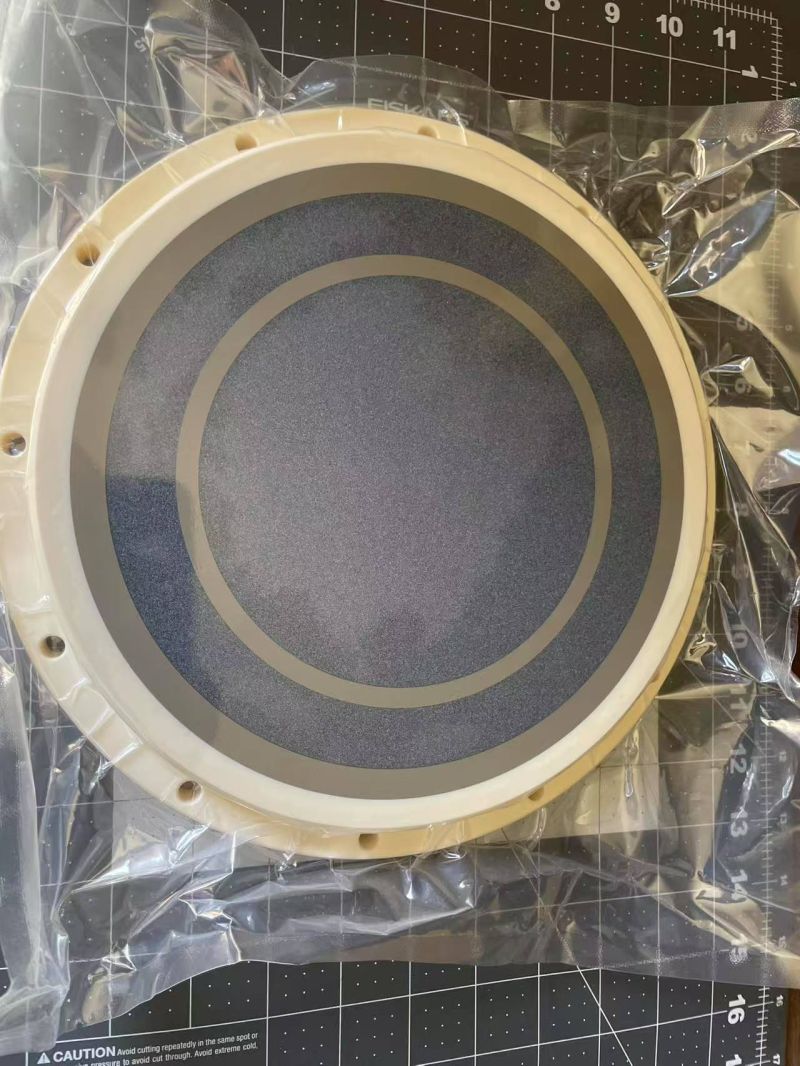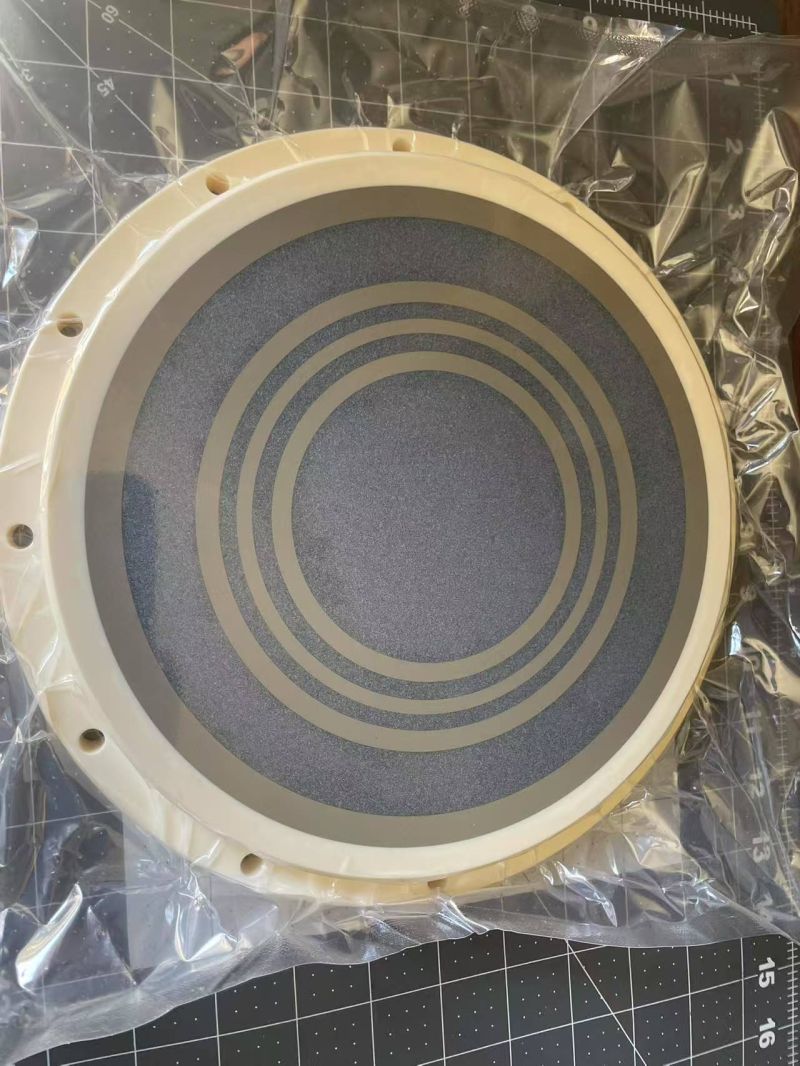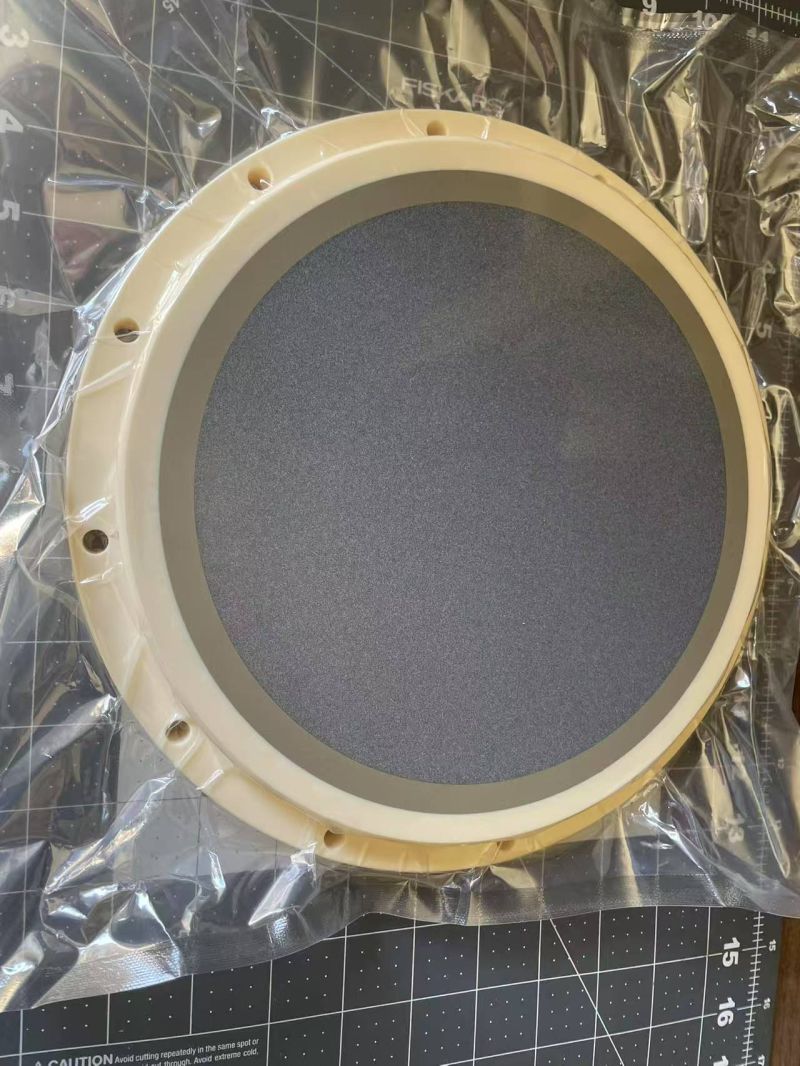Coma News
Community
News
HOME > News
Influence of Key Parameters on Wafer Thinning Performance
An introduction of CERAMERIC SEMIXICON wafer thinning chuck
1. Overview
This document analyzes key process parameters in wafer backgrinding (feed speed, chuck rotation, spindle rotation, grind amount, and stage settings) and their effects on TTV, Ra, edge chipping, bow/warp, and crack risk.
The objective is to establish parameter-setting logic for optimized thinning quality and throughput.
2. Core Parameters
| Parameter | Unit | Typical Range | Main Impact |
|---|---|---|---|
| Feed Speed | μm/s | 0.1–10 | Removal rate, surface stress |
| Chuck Table Rotation | rpm | 100–300 | Uniformity, TTV |
| Spindle Rotation | rpm | 3500–5500 | Ra, wheel wear |
| Grind Amount | μm | 5–100 | Warp, cracking risk |
2.1 Feed Speed
Definition: Axial feed rate of wheel relative to wafer (Z-axis).
High speed (5–10 μm/s):
↑ Throughput, ↓ cycle time.
↓ Surface quality (Ra >0.5 μm), ↑ TTV, ↑ edge chipping, ↑ crack risk (<100 μm wafers).
Low speed (<1 μm/s):
↑ Surface finish (Ra <0.2 μm), precise TTV (<1.5 μm).
↓ Productivity, risk of wheel clogging.
Recommendation:
Coarse grind: 5–10 μm/s
Semi-fine: 2–5 μm/s
Fine: 0.1–0.5 μm/s
Ultra-thin (<50 μm): <0.5 μm/s
2.2 Chuck Table Rotation
Definition: Wafer rotation speed controlling grinding uniformity.
High (200–300 rpm): Better TTV, but ↑ centrifugal stress and edge damage.
Low (<200 rpm): Higher wafer stability, but ↑ Ra and nonuniform removal.
Recommendation:
Normal wafer: 200–300 rpm
Ultra-thin: 100–200 rpm
Maintain fixed ratio with spindle rotation (1:15–1:20).



2.3 Spindle Rotation
Definition: Wheel spindle speed controlling cutting velocity and Ra.
High (4500–5500 rpm):
↓ Ra (<0.1 μm), uniform wear.
↑ vibration, energy, wheel fatigue.
Low (<4000 rpm):
↓ vibration, good for sensitive wafers.
↑ smearing, ↓ removal rate.
Recommendation:
Coarse: 4500–4800 rpm
Fine: 5000–5500 rpm
Diamond wheel → +5–10% speed; CBN → –5–10% speed.
2.4 Grind Amount
Definition: Material removal thickness per process or total.
Large (>100 μm/pass): Fast but ↑ stress, warp (>10 μm), crack risk (SiC/GaN).
Small (<50 μm/pass): Low stress, high flatness (BOW <5 μm) but ↑ cycle time.
Recommendation:
Total removal = Initial – Target – Polishing margin (5–10 μm).
Stage ratio: Coarse 70–80%, Semi-fine 15–25%, Fine 5–10%.
Brittle wafers: <30 μm/pass.
3. Multi-Stage Process Settings
| Stage | Objective | Feed (μm/s) | Chuck (rpm) | Spindle (rpm) | Grind (μm/pass) | Key Targets |
|---|---|---|---|---|---|---|
| Process 1 – Coarse | Bulk removal (~70–80%) | 5–10 | 250–300 | 3500–4500 | 50–80 | Ra <1 μm |
| Process 2 – Semi-fine | Correct TTV/defects (~15–25%) | 2–5 | 280–300 | 4000–5000 | 20–30 | TTV <2 μm |
| Process 3 – Fine | Final finish (~5–10%) | 0.1–0.5 | 350–450 | 4800–5500 | 5–10 | Ra <0.2 μm, TTV <1.5 μm |
4. Parameter Coordination & Optimization
Key Rules:
Rotation Ratio: Keep chuck/spindle speed ratio constant to stabilize grinding trajectory.
Grind Allocation: Coarse : Semi-fine : Fine = 7 : 2 : 1.
Feed Gradient: Decrease feed progressively across stages (50–80% total reduction).
Stress Control: Avoid large single-pass removal; use smaller steps for brittle wafers.
5. Common Issues & Adjustment Guidelines
| Issue | Cause | Corrective Action |
|---|---|---|
| High TTV (>3 μm) | Speed mismatch, poor grind ratio | Adjust chuck/spindle ratio; increase semi-fine removal to 30%; lower fine feed |
| High Ra (>0.5 μm) | Low spindle speed, high feed | Increase spindle rpm; lower feed to 0.5–1 μm/s |
| Edge chipping (>50 μm) | Fast feed, excessive chuck rpm | Reduce coarse feed; lower chuck speed 10–15%; extend edge fine-grind |
| Crack/warp | Excess removal per pass | Split coarse removal (<50 μm/pass); lower feed; increase fine duration |
6. Summary
Wafer thinning performance depends on balanced control of key parameters:
| Parameter | Function | Control Focus |
|---|---|---|
| Feed Speed | Material removal rate | Lower for quality, higher for throughput |
| Chuck Rotation | Uniformity / TTV | Match with spindle ratio |
| Spindle Rotation | Surface finish / vibration | High for fine Ra |
| Grind Amount | Stress / warp | Stage distribution critical |
Key Takeaways:
Coarse grinding → prioritize removal efficiency.
Semi-fine grinding → correct deviation and residual stress.
Fine grinding → ensure Ra <0.2 μm and TTV <1.5 μm.
Maintain coordinated parameter tuning; avoid optimizing single variables independently.
Apply FDC (Fault Detection & Classification) and historical data analytics for adaptive recipe optimization.
CERAMEIR SEMIXICON THE WAFER CHUCK TABLE EXPERT
DECADES OF EXPERIENCE, TEN THOUSAND POROUS CHUCK BUILT


 Preview
Preview Next
Next